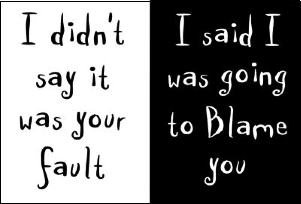A Survivor’s Approach to Beating Back Injuries
Today’s guest post comes from William Richards, and outlines some of the less than common concepts that can be major contributors to helping someone overcome a low back injury. I’ll preface the article by saying these are things he’s found to work for him, but as with any injury if you’re dealing with something like this, talk with a qualified medical professional and see if the recommendations would be appropriate for you.
****
For years I was afraid of the word back pain. It seemed that most of my clients I worked with complained of some kind of nagging back pain before even starting a program with me. A good chunk of these people had all been through the “system” when it came to being seen by their doctor and going through the rinse and repeat system they all seemed to have.
I figured this was just the way it was. Once you had “back pain” you might as well start working on that dad bod and picking out a new pair of sandals to go with those bright white socks. I was convinced it wouldn’t happen to me so I stuck to changing lives and helping others improve.
Until it happened.
In 2010 ish I was diagnosed with a ruptured L5-S1 disc. I had been dealing with back pain a few months before the diagnosis but was never able to pinpoint one big event that may have caused it. My back just started hurting. Long story short I spent the next 4 years swiping (as in these treatments are $$) my way through the medical industry’s way of treating back pain. I refused drugs and opted out of surgery and ended up kicking my doctor to the curb. Not because he was a bad person but he had convinced me that my pain was irreversible and that I was destined to the dad bod life.
Fast forward 3 years and here I am today. Drug and surgery free but most importantly entirely in control of my back pain. There are some huge lessons I learned when rehabbing what I thought was my broken body and what I teach my own clients today which typical carries a lot of success when applied to their own recovery.
I am not going to give you any secret stretches or exercises that will magically erase your pain but what I do want to do is give you the mindset and actionable steps it takes to gain control of your own pain or someone you may be working with.
Your Responsibility as a Back Pain Sufferer
1 – You need to spend time getting to know your cause and triggers to pain.

Getting a notebook and writing down details about your recent flare up is extremely powerful. It may not make sense at first but you want to ask questions like: Was it in the gym? Was it after a certain exercise? Was it at home after a long day in the yard or right when you got out of bed and bent over to put on your pants? The solution to beating back pain is in the details and the more you understand what causes the pain the more you will begin to see faulty patterns in movement. It’s all about connecting the dots and seeing if they all lead to a common theme such as being flexion intolerant or extension intolerant. This typically happens after years and years of faulty movement patterns in these directions and now the supporting tissues are fed up.
(Note from Dean: Dr. Stuart McGill does a great job at outlining how to determine your own triggers in his book “Back Mechanic: The Step-by-step Mcgill Method to Fix Back Pain,” and it’s written for the client or patient who may not have any training in anatomy.)
What this may look like for you:
–The most common issues you see with back pain are intolerances with flexion, extension, pain with movement under load vs no load and/or pain with sitting vs standing. These are just a few of the most common that you see.
Pay close attention to these and take note of which one you experience the most pain with. An intolerance to a certain movement usually means your mechanics are not supportive of healthy spine movement in that direction or in that position.
–Does your back “give out” or “catch” when rolling over in bed or after you sneeze/ cough? These types of sharp catches are normally from instability around the spine.
–Does your pain increase as the day goes on or does the pain seem to go away or get better instead? If your pain gets worse as the day goes on typically this may point to an instability and posture issue. We start off great but as the day goes on we start putting our core bracing and posture off to the side and start reacting to our environment with careless movement.
Anyone with back pain will have specific things that trigger their pain vs what brings relief. The point to this is not to make a blanket diagnosis on these 3 examples but to get you as the sufferer to start thinking like a detective.
2 – Get assessed or learn basic posture and movement habits.

You don’t have to be a doctor to look at your life and see how often you spend sitting, playing video games, lifting and carrying kids or anything else that would keep us from maintaining good posture and healthy movement habits. For some, back pain can be fixed by simply spending a few months correcting common issues such as anterior pelvic tilt, rounded shoulders or a forward head posture. No, this doesn’t cover everyone but if you have any of these issues and also have back pain guess what you should focus on?
There are so many great sources online teaching posture correction and constantly talking about changing lifestyle habits. Find someone you trust and listen to what they say. Just be sure you have a good understanding of your situation. At the end of the day addressing dysfunctional movement and posture is a win win situation.
For me, the hardest time I had was finding a medical professional that I trusted who truly gave my specific situation a long hard look. It is extremely hard to find a doctor, chiro, physio etc. who sees the value in taking the time and really breaking down your life and getting to the bottom of your specific case.
This is how I was successful using the “medical industry” as I needed them.
One thing thing that helped me tremendously was putting together a set of questions I would ask each “professional” I was going to see.
The questions that I used sounded something like this:
- I need help correcting the way I move (sit, stand, bend) do you have any experience with that?
- Why/How will ___________ help fix the ROOT cause to my pain?
- If surgery is my only option, how will you teach me to keep from making the same mistakes that caused the damage you are going to be operating on?
- Who would you suggest I go to see who specializes in posture and movement?
I could go on and on with these questions only because I have been in the game for a while and have been through the typical “back pain system”. Some of these questions may not fit you specifically but the key to any conversation with someone who is going to work on you is find out exactly how their treatment is going to address the cause. Most back pain cases can’t simply be rubbed away under the sound of dijiridoos and over priced salt rock lamps. That may help with short term relief but the tissues in your lower back are fed up with a lot more then your high stress life. It’s about how you care for and use the body you were given.
3 – Take responsibility for your body.

Listen, nobody has a gun to your head forcing you to spend 12 hours a day sitting on your butt. We go to our doctors expecting them to have the magic solution but really all they know to do is prescribe medication or refer you out to a therapist. Doctors go to school to learn to heal rare blood diseases not teach you why binge watching House of Cards on your worn out couch followed by a 2 hour burpee and deadlift gym session is destroying your back. Ain’t nobody got time for that.
Unless you have some rare issue or have been in a sever accident, odds are your back pain is your fault. It may be a complicated fix or it could be super simple. Bottom line, we do this to ourselves. If you want to finally beat back pain stop taking the painkillers and start learning how to move. Become anal about your posture, how you sit, stand and bend. Become a master of your own pain cycle and with time, you WILL see improvement.
The most common thing I hear when working with people in the gym with terrible mechanics or form is “I don’t want to drop weight or work on that stuff, I just want to work out!”. The industry has been feeding consumers this poison for years. It’s all about the workout. How hard it is, how dynamic or functional it is etc. Whether you’re hitting squat PR’s or finally able to hip hinge without back pain. Your focus needs to be on your long game. In 5 years, do you think you will be able to continue to train with crippling back pain? You won’t. Steroid shots from the doc are only going to cover it up for so long.
Here’s a place you can start!
If you’re currently dealing with back pain you have to first figure out whether this is acute or chronic.
-Acute is pain from laying 400 sq feet of mulch over the weekend. This type of pain is normally best addressed by taking it easy and taking some mild OTC Anti-inflammatories. This person typically would respond well from removing any unnecessary movements similar to what put them there in the first place.
This may sound terrible but I prefer everyone to experience some kind of acute lower back pain in their life. I say this because people who experience back pain realize how much little movement affects the tissues in that area. When someone I know has acute pain I really try and take the time and have them focus on proper movement, bracing and hip hinging because most (not all) can actually do these movements without making the pain worse or without any pain at all. Our body is the best teacher we will ever have. It has no problem telling you that what you’re doing is wrong.
-Chronic pain is a little bit different. Odds are, the 800mg of Ibuprofen has become a staple in your diet just to get by. For you, I would get checked to rule out any major issues. There is a list of 6-8 red flags that doctors look at such as severe numbness in the legs, loss of bowel control etc. to help them decide on the best route for you. If you have been cleared and the only things you hear are mild herniations, degenerative discs etc. then welcome to 80% of spines in the world.
Most chronic pain cases stem from doing the wrong thing over and over and over. For 4 years I was labeled as a chronic pain sufferer due to the extent of damage in my lumbar spine. All treatments offered to me after my MRI results were always surgery and pain management (drugs). The thing about it, most common chronic back pain cases revolve around poor movement, posture dysfunctions and lack of spine stability that CAUSE damage to the spine. So yes, surgery in some cases is needed but the surgery is not going to fix the reason why you’re there in the first place.
When in doubt explore these 3 areas not for a guaranteed solution but for the best first step for ANYONE with chronic back pain.
1- Posture Correction
2 – Movement Dysfunctions (how you sit, stand and bend)
3 – Spine Stability (bracing and core endurance)
4 – Pick 1 and make it stick.

There’s so much stuff on the internet these days. Online coaches making glute stretches look like the coolest thing since vaping. It’s so easy to flip through Instagram and see someone who spent hours editing a 1-minute video to make stretching something look cool. We tend to lose focus on what matters to our specific situation. If you know you have rounded shoulders, attack those relentlessly until you see massive progress.
We get into this trap of always “trying things out” that we never spend enough time on the first thing to actually see results. Do you know how long it takes to see dramatic results with an Anterior Pelvic Tilt? Months. My rule of thumb is approach treating something you are confident is a problem with the solution that you know for a fact will actually reverse the issue for no less than 3 months.
The actionable step for this part is very person specific. If you’re like me and would rather use my education, research and hard work to fix my problem then you have to learn to be a detective. I can’t tell you your hamstrings stretch is going to solve your problems but what I can say is if you’re going to do it, than do it for a long enough time to know for a fact it’s not the right application in your situation.
If you need something to chew on then follow these three rules when trying something new out.
- If it hurts then stop doing it. Relief from back pain is never found from pushing through pain.
- If the pain stays the same or gets better continue to do it with caution. Don’t jump the gun and muscle through just to get “better results”. Go slow and be patient.
- If it’s showing signs of improvement then stick to it for a few months after the pain subsides. Take the time to begin to challenge the movement with a more dynamic exercises or adding load. Always stay BELOW your pain tolerance.
An example of number 3 would be going from learning how to breath and brace the core at the same time ⇒ learning to breathe, brace and hip hinge ⇒ learning to breathe, brace and hinge under light load. You see where I am going with that?
It’s all about progression without pain.
Final thoughts.
I believe it’s time we stop medicating ourselves or supporting those who do when it comes to back pain. Back pain is not a death sentence. Your doctor may not have a fat clue as to where to start addressing it and that’s ok. There are professionals who are pioneering a more personal approach to pain management and I am passionate about making this a priority for anyone dealing with chronic pain. There is always a place for your trusted medical doctor but when nothing else is working it’s time to take a long hard look at yourself and start digging for a solution.
As a sufferer of chronic back pain and as a coach hear me on this, you have more control over your pain then you think you do. Nobody is responsible for your body any more then you are.
-William-
About the Author

William Richards is an Exercise Science nerd and trainer based out of Virgina. Aside from running a few local 24 hour gyms he can be found reading old Biomechanics textbooks, blogging, helping clients rebuild their bad backs and eating Mexican food. William frequently talks all things back pain over on his blog fitness4backpain.com
2 Responses to A Survivor’s Approach to Beating Back Injuries